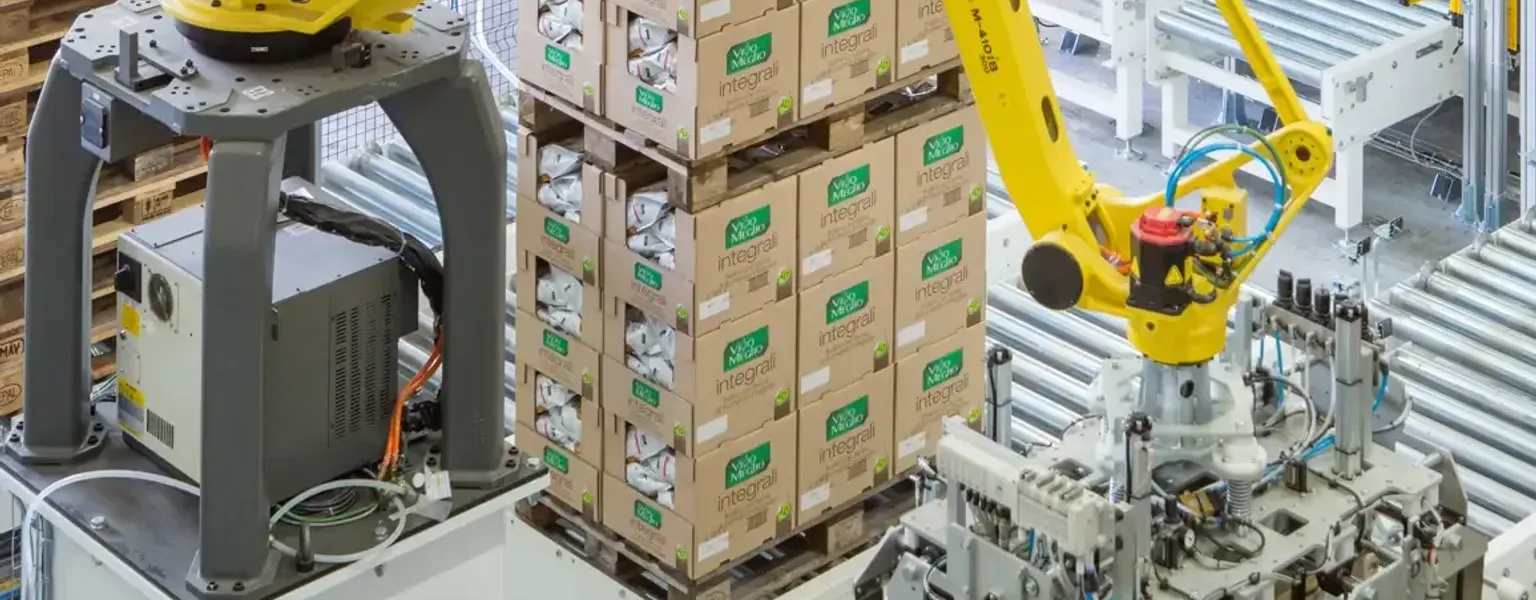PHS: Unpacking the roles of robotic palletising and de-palletising in automation

Supplier News
The automation boom in factories and warehouses worldwide is largely attributed to the increased adoption of robotic palletising and de-palletising systems. Nearly every manufacturing operation involves some aspect of shipping and receiving that can benefit from automation.
Moreover, the nature of palletising and de-palletising jobs aligns perfectly with the types of tasks robots excel at: repetitive, laborious, and often hazardous work that can be difficult and risky for human workers. These tasks, characterised by the moving of heavy boxes and goods, are ideally outsourced to robotic counterparts.
While the implementation of such robotic applications is widespread, it’s not without its challenges.
Distinguishing palletising from de-palletising
Palletising involves systematically placing materials onto a pallet for transportation, while de-palletising involves taking goods off a pallet, typically for receiving and integration into a production line. Although they involve similar actions, these two activities differ significantly in terms of challenges and operational requirements due to the distinct processes and limitations associated with each.
Essential aspects of robotic palletising systems
- Material Handling: Understanding the characteristics of the material being handled is vital. It influences the choice of robot arm, gripper, and vision system. Is the robot dealing with boxes, bags, or a combination? Are there variations in transparency or packaging colour that could affect sensor detection?
- Arrangement: The setup of the incoming conveyor and the required pallet configuration will dictate the complexity of the gripper system. Considerations like the placement of slip sheets between layers on the pallet add another layer of complexity.
- Speed and Throughput: Efficiency is paramount, particularly at the final stages of a production line. Any delays can cause backlogs, making the robot’s reaction time and movement speed vital to the overall operation.
Intricacies of robotic de-palletising systems
- Material Specifics: Like palletising, the material influences robot selection and the design of the gripping mechanism and sensory equipment. Challenges arise with the unpredictability of inbound pallets, particularly with shrink-wrapped items or mixed SKU pallets that require advanced recognition systems.
- Object Arrangement: The pattern and tightness of box packing can pose unique hurdles, as sensors may struggle to differentiate between closely packed items, leading to selection errors.
Despite these challenges, countless robotic palletising and de-palletising systems have been successfully deployed and optimised. As you contemplate the integration of such automation into your workflows, it is important to consider the following inquiries:
- Does the scale of your operation justify the financial investment in automation?
- What is the range and nature of the items that your operation handles?
- How much physical space can you allocate for the robotics?
- How do you plan to finance the implementation of this technological upgrade?
Approach this transition with confidence, understanding that although it demands meticulous planning, the successful application of these systems in various industries suggests that embracing robotic palletising or de-palletising could be a game-changer for your business operations.
This article was originally published by Phoenix Handling Solutions.
Related News
-
Supplier News
PHS: Layer palletisers for beverages
-
Supplier News
PHS: Why efficient packing is not just for holidays…
-
Supplier News
PHS: Strapping in for success…
-
Supplier News
PHS: Working smarter for commercial and industrial manufacturing efficiency
-
Supplier News
PHS: Packaged to perfection for industrial and commercial needs





